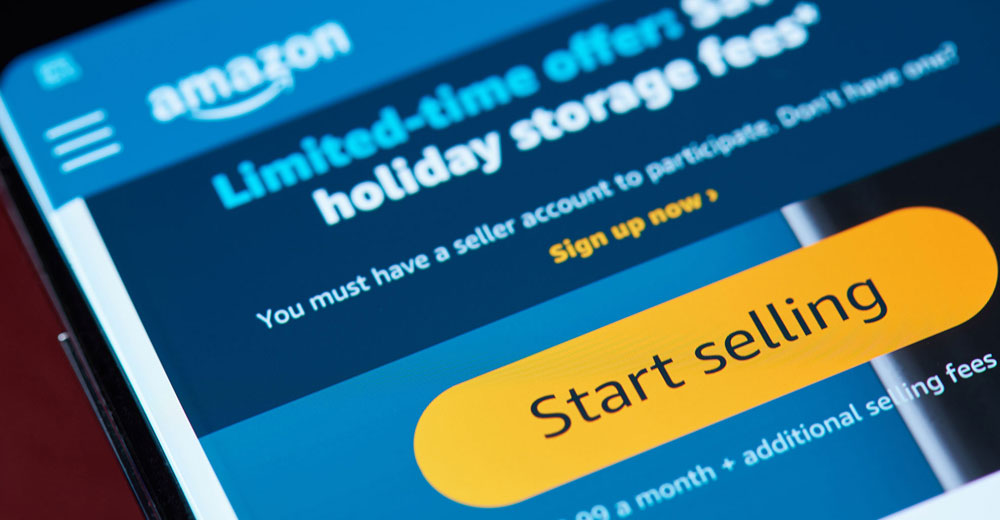Research indicates that 66 percent of online shoppers start their product searches on Amazon, and Amazon shoppers behave differently than buyers on other online platforms and at brick-and-mortar stores.
Amazon has set up its listings so that it is simple to “window shop” and compare competitive products. A brand must make sure to position its products in a way that shows how it is different from competitors in the marketplace.
Succeeding on this consumer-driven platform requires a robust, Amazon-specific marketing strategy. These tactics should fit into the traditional, overarching strategic plan of a company and encompass all the different variables and factors on Amazon.
Following is an outline of best practices for the use of advertising, photography, branding, key messaging, and more to develop a marketing strategy that can succeed in the face of Amazon’s frequently changing algorithms and ever-expanding customer base.
1. Take Advantage of Advertising
Amazon topped US$10 billion in revenue for the advertising side of its business in 2018, making it the third-largest ad platform behind Google and Facebook. Advertising is an extremely profitable and powerful division, growing faster than even Amazon’s net sales.
Amazon is continuing to invest in its ad business, which is growing rapidly at an increase of 95 percent year over year, according to recent earnings reports.
While Amazon ads continue to breed competition on the platform, the key is to convert shoppers who visit a listing into buyers, knowing full well that there are other products advertising directly on and around the listing.
If not thoughtfully targeted and properly managed, Amazon’s costly ads can easily suck dollars out of a brand. A common mistake for brands is to copy Google campaigns directly over to Amazon, not realizing the Google platform and the Google shopper’s behavior is very different from those of Amazon.
Having the same strategy for branded terms and non-branded terms is another common pitfall. For example, marketers should have different strategies for customers who are looking for a brand or their products specifically (e.g., Apple MacBook), compared to customers looking for the type of product broadly (e.g., laptop).
Brands must focus on people who are searching for their products specifically because competitors are going to be showing up on the same listings through their own strategic advertising.
Another common pitfall is relying on automatic campaigns. For beginners, Amazon has its own automatic algorithm that helps find new terms and determines good bids. This is a great tool to help a brand get started with advertising on the platform.
However, it is recommended to use a mix of manual and automatic bidding for any given product portfolio. Relying exclusively on automatic bidding means potentially missing out on some important terms and cost-effective keywords.
Experts expect that Amazon is going to continue to give sellers more options to advertise and create even more customized opportunities. These options often are beta tested, but sometimes the features show up unannounced. Brands should make sure to stay on top of any new features and implement them as soon as they become available.
2. Optimize Listings
Advertising is one piece of a larger puzzle. Ads are a great way to drive traffic, but traffic is only good if it can be converted into sales.
On a listing, brands should be sure to answer the questions a consumer is asking when buying something. Stand in the customer’s shoes. What problem is the shopper trying to solve? What might cause hesitation? Brands can overcome the buyer’s objections, but only by using top-notch imagery, copy, and branding.
That’s why marketers need to ensure that paid ads, Amazon SEO, photography, and a variety of other factors are working hand in hand. Driving more traffic works better if you have a higher close rate, so it is vital for a brand to have an overall plan of action encompassing all of those factors. That will make it easier for the customer to pick your product over a competitor’s.
One way to improve an existing listing today is to make sure it answers this question: What does the product look like in use? A page should provide clear measurements and a sense of scale in product photography by comparing it against the size of a person or within a room.
Additionally, if a product has a key differentiator from a main competitor’s product that shoppers also may be considering, call that out in the listing. Does the product photography show the features customers are looking for? Is there a good mix of lifestyle and white-background photography?
3. Explore Search Data
When considering products to develop in the future, forward-looking brands analyze Amazon search data. This data is beneficial not only for selling products to Amazon shoppers day to day but also for informing them what to offer in the future.
For example, one consumer brand saw a demand for an American flag colorway of its product that wasn’t being offered by anyone selling on Amazon. In response, it launched the product with a flag theme, which has been very successful.
Examine the themes, colors, and features of a product that shoppers consistently search for but fail to find, and create an item — and corresponding well-targeted listing — to meet that demand.
4. Find a Partner
For help in developing and executing a winning Amazon marketing strategy, consider engaging a third-party Amazon partner. Partners are able to think proactively and identify trends as they are happening. Brands that manage Amazon themselves tend to be more reactive because most don’t have the luxury of thinking exclusively about their Amazon strategy.
When choosing a third-party Amazon seller, it is important to understand the team that will be working on your brand. Who is the account manager? Graphic designer? Photographer? Who will be the point person for making sure products get to the Amazon distribution center?
A good third-party seller will be available and communicative about all aspects of the relationship. Ask questions about inventory management, the onboarding process, how it handles different types of partners, and how it approaches the industry. Get an understanding of how it will transition listings, and ask for examples of previous Amazon strategies.
Amazon’s algorithms, tools, and practices are ever-changing. One of the most valuable advantages of working with a trusted third-party seller is that it is working with hundreds or thousands of brands a day.
Its experts are able to address trends proactively. By working with a trusted Amazon partner, companies can ensure they are able to take advantage of changes as they occur, thanks to the partner’s inherent expertise in specific areas.
Often, brands are able to communicate what makes a product different or special in sales pitches, brochures, and owned websites — yet Amazon optimization is considered an afterthought. Instead, brands should move toward a robust, Amazon-specific marketing strategy to elevate their products against the millions of others on the platform.














































Social Media
See all Social Media